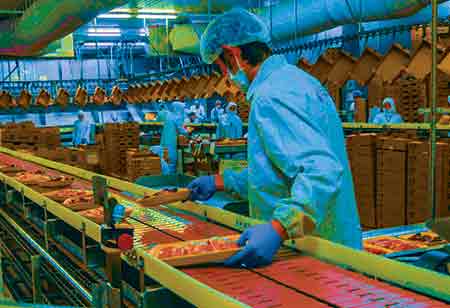Thank you for Subscribing to Food Business Review Weekly Brief
- Home
- Topics
- Alternative Proteins and Plant Based Food
- Beer and Wine
- Canned Beverages
- Coffee And Tea
- Food and Beverage Consulting
- Food and Beverage Financial Service
- Food And Beverages Marketing
- Food Distributors
- Food Ingredients
- Food Sustainability
- Plant Based Food and Beverages
- Seafood Suppliers
- Supplement Manufacturing
- Wine Investment
- News
- Vendor Viewpoint
- CXO Insights
- Conferences
- Newsletter
- CXO Awards
-
What is the Significance of Sustainable Food Practices?
Sustainability in the 21st century refers to the ability of the earth and all its resources to coexist with humans.

By
Food Business Review | Monday, January 23, 2023
Stay ahead of the industry with exclusive feature stories on the top companies, expert insights and the latest news delivered straight to your inbox. Subscribe today.

Sustainable food practices come with various key advantages, such as eliminating food waste and providing support to suppliers who are certified organic and produce more food without wasting it.
FREMONT, CA: Sustainability in the 21st century refers to the ability of the earth and all its resources to coexist with humans. By not diminishing the earth's natural resources, sustainability means meeting our own needs without compromising the ability of future generations to meet theirs.
There is more to food sustainability than just the food itself. In other words, it is a combination of factors, such as how food is produced, distributed, packaged, and consumed. In recent years, the term 'food sustainability' has become increasingly popular. Despite its importance to the planet, it is also becoming increasingly popular among home cooks, chefs, and customers.
Many restaurants can practice sustainable food choices in the following ways:
● Produce can also be locally sourced if home growing is not an option.
● In plot-to-plate eating, as much produce as possible is grown and harvested on-site.
● Plant-based produce often requires less energy from fossil fuels, less land, and less water than meat.
When meat is used, it should be sourced ethically and sustainably. In other words, farmers must ensure high standards of animal welfare and sustainable practices.
It is also beneficial to encourage a nose-to-tail approach when using meat in order to use as much of the animal as possible in as many ways as possible so that little of it goes to waste.
Reducing food waste by donating food to charities or selling it at a discount on apps.
As a result, some fine dining restaurants are reducing waste by using all of their produce; before, large quantities of vegetable peelings were discarded.
Sustainable food practices were greatly encouraged by covid-19. The comfort blanket of global food security was absent for the first time in decades. In covid-19, supplies ran low, affecting food from bog roll hoarders to Tesco's empty pasta shelves. Covid-19 disrupted the supply chain of beef, milk, eggs, potatoes, and vegetables such as leafy greens. The farmers couldn't transport their products to their not-so-local customers. Consequently, a great deal of food was wasted.
As a result of environmental concerns and societal demands, many restaurants are sourcing their food locally and practicing sustainability. Invariably, food trends trickle down to those with home food businesses and humble home cooks - and thus into food shopping.
Habits of Sustainable Eating: We are more focused on the notion of sustainable eating habits when looking at smaller-scale production, such as home food businesses, home cooks, and food shopping. As a home cook, sustainable food practices mean different things than those on a larger scale, such as:
Buying local ingredients, such as produce, meat, dairy, and grains. This also refers to limiting overseas shipping and also reducing road transportation.
Avoiding food waste as much as possible.
By cooking with ingredients that are in season in the area, people will avoid unnecessary transportation of production overseas, mostly fruit and vegetables.
Buying and cooking more plant-based ingredients and less meat and dairy. Globally, meat farming is responsible for 60 percent of greenhouse gas emissions related to food.
Production of sustainable food: Restaurants and production lines in manufacturing are examples of large-scale production. To ensure sustainable practices, they can make the following changes:
Packaging that is sustainable should be invested in. Materials can be repurposed for new packaging, or compostable or recyclable materials can be used.
In order to reduce waste, it is necessary to record the amounts of waste produced and at which locations within the factory so the data can be measured and analyzed.
Seventy percent of the world's freshwater is used for agriculture. The use of drip irrigation and wastewater reuse is far more sustainable than conventional watering.






